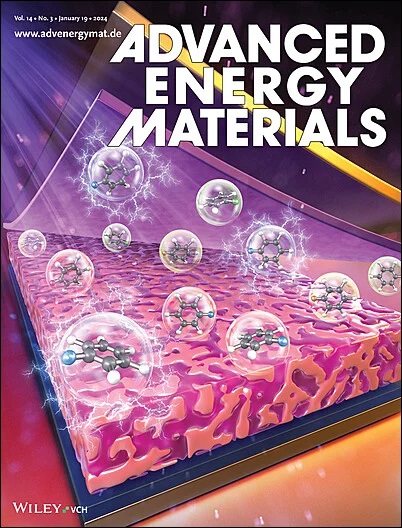锂石榴石电池用全陶瓷复合阴极的稳定界面研究
IF 24.4
1区 材料科学
Q1 CHEMISTRY, PHYSICAL
引用次数: 0
摘要
采用氧化物电解质的全固态锂金属电池的发展受到化学不相容性和界面电阻升高的限制。特别是,复合阴极的高温共烧会导致活性材料和电解质(阴极液)之间的界面形成二次相,从而降低电化学性能。本文研究了高温下不同锂氧分压下锂石榴石(Li7La3Zr2O12)和LiCoO2共烧过程中阳离子的相互扩散机制。当锂和氧的分压降低时,观察到次要相LaCoO3的形成;然而,在较高的分压下,这一阶段被抑制,导致电导率大幅增加几个数量级。高密度的,无二相的复合阴极被成功地制造出来,在室温下0.25毫安厘米毒血症的电流密度下提供了最高的3.48毫安厘米毒血症的面放电容量,证明了阴极的杰出性能。这些发现为开发包含薄氧化物电解质和锂金属阳极的全氧化物固态电池原型提供了有希望的见解。本文章由计算机程序翻译,如有差异,请以英文原文为准。
Stabilizing Interfaces of All‐Ceramic Composite Cathodes for Li‐Garnet Batteries
The development of all‐solid‐state lithium metal batteries employing oxide electrolytes is limited due to chemical incompatibilities and elevated interfacial resistance. In particular, high‐temperature co‐firing of composite cathodes leads to secondary phase formation at the interface between the active material and the electrolyte (catholyte), which in turn degrades electrochemical performance. Here, the cation interdiffusion mechanism is investigated during the co‐firing of Li‐garnet (Li7 La3 Zr2 O12 ) and LiCoO2 under varying partial pressures of lithium and oxygen at elevated temperatures. At reduced partial pressures of lithium and oxygen, the formation of a minor secondary phase, LaCoO3 is observed; however, this phase is suppressed under higher partial pressures, resulting in a substantial increase in electrical conductivity by several orders of magnitude. Highly dense, secondary‐phase‐free composite cathodes are successfully fabricated that deliver the highest reported areal discharge capacity of 3.48 mAh cm⁻2 at room temperature under a current density of 0.25 mA cm⁻2 , demonstrating the cathode's outstanding performance. These findings offer promising insights for the development of all‐oxide solid‐state battery prototypes incorporating thin oxide electrolytes and lithium metal anodes.
求助全文
通过发布文献求助,成功后即可免费获取论文全文。
去求助
来源期刊

Advanced Energy Materials
CHEMISTRY, PHYSICAL-ENERGY & FUELS
CiteScore
41.90
自引率
4.00%
发文量
889
审稿时长
1.4 months
期刊介绍:
Established in 2011, Advanced Energy Materials is an international, interdisciplinary, English-language journal that focuses on materials used in energy harvesting, conversion, and storage. It is regarded as a top-quality journal alongside Advanced Materials, Advanced Functional Materials, and Small.
With a 2022 Impact Factor of 27.8, Advanced Energy Materials is considered a prime source for the best energy-related research. The journal covers a wide range of topics in energy-related research, including organic and inorganic photovoltaics, batteries and supercapacitors, fuel cells, hydrogen generation and storage, thermoelectrics, water splitting and photocatalysis, solar fuels and thermosolar power, magnetocalorics, and piezoelectronics.
The readership of Advanced Energy Materials includes materials scientists, chemists, physicists, and engineers in both academia and industry. The journal is indexed in various databases and collections, such as Advanced Technologies & Aerospace Database, FIZ Karlsruhe, INSPEC (IET), Science Citation Index Expanded, Technology Collection, and Web of Science, among others.
 求助内容:
求助内容: 应助结果提醒方式:
应助结果提醒方式:


